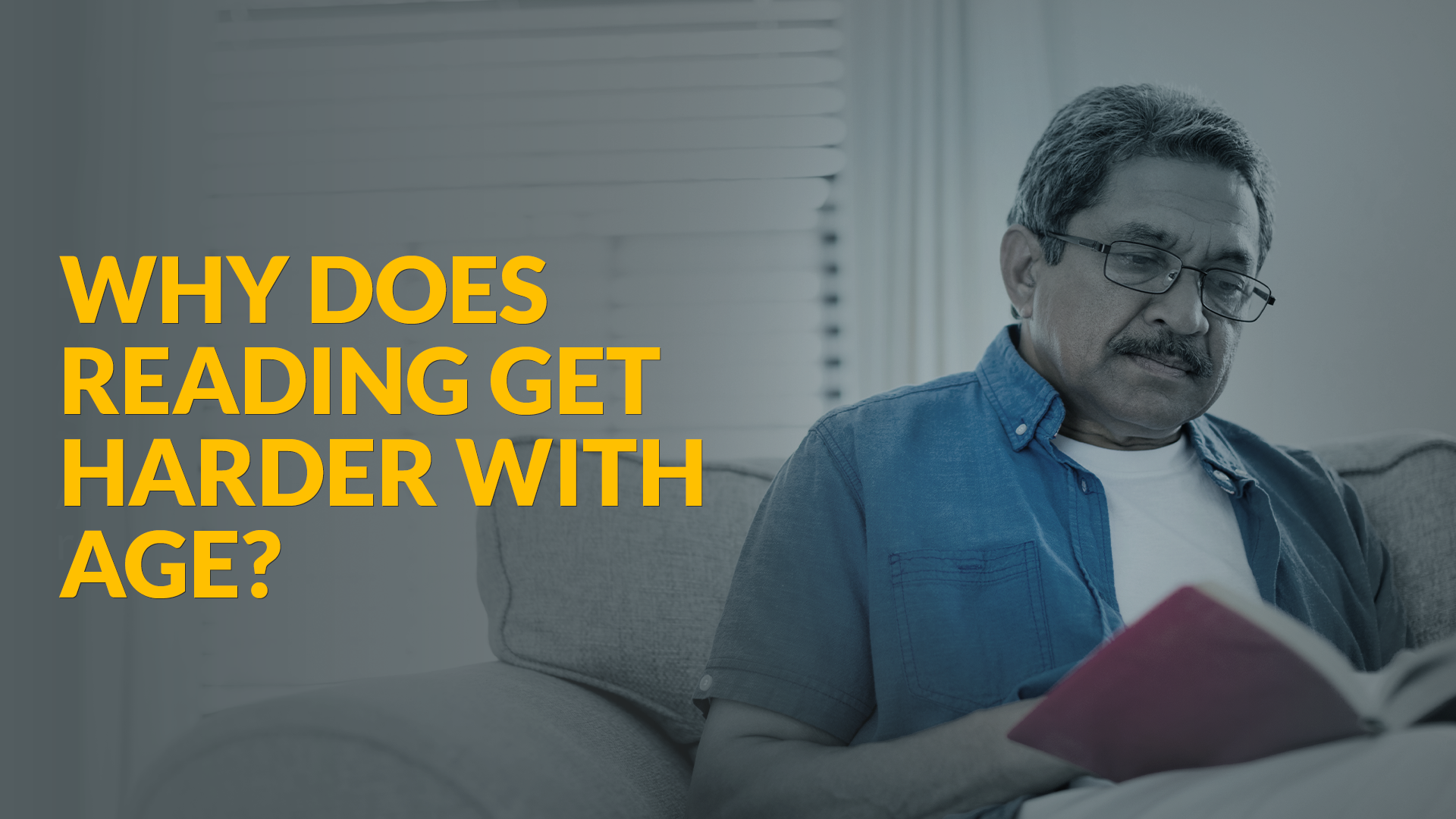
-
 Posted By shubham dhyani
Posted By shubham dhyani -
-
Comments 0
As individuals grow older, age-related vision loss is a gradual issue that most of you must have or will experience. This often affects simple day-to-day activities like reading books or newspapers, watching television, driving, or simply scrolling through phones. Like your body muscles and bones getting weaker with age, your eyes and vision also weaken due to the natural phenomenon of ageing.
However, upon diagnosis at an early stage and taking the required steps timely manner will help you to manage the condition. Age-related vision loss refers to a decline in visual abilities, and if you are wondering why eyesight changes with age? Well, it’s due to a condition called presbyopia that affects your eyes around the age of 40. It is not specifically a disease but a functional shift in your body that is inevitable.
To know more about presbyopia, its symptoms, treatment options and how to take care of your sensitive eyes, read more.
What Causes Presbyopia?
Presbyopia is the gradual thickening and loss of flexibility of the eye’s natural lens. As this lens ages, it becomes less able to change shape to focus on close-up objects, leading to blurred near vision. This is why many people over 40 find themselves holding newspapers or phones farther away to read clearly.
Also Read:- Why Regular Eye Checkups Are Essential After 40
Presbyopia Causes:
- Loss of lens elasticity: With age, the lens loses its ability to flex, which is necessary for focusing on nearby objects.
- Weakening of ciliary muscles: These muscles help the lens adjust its shape. Over time, they become less efficient.
- Changes in lens protein composition: These changes affect the clarity and function of the lens.
Why Eyesight Changes With Age
Apart from presbyopia, several age-related changes can impact reading and overall vision:
- Reduced pupil size: Ageing causes the pupil to shrink and react more slowly to changes in light, making it harder to read in low-light environments.
- Decreased tear production: Dry eyes can cause irritation and blurred vision, especially during prolonged reading.
- Yellowing of the lens: The lens may take on a yellowish hue with age, altering colour perception and reducing contrast sensitivity.
These biological changes can contribute to difficulty reading with age, especially under dim lighting or with small fonts.
Vision Problems After 40: More Than Just Reading
While difficulty focusing on near tasks is the most noticeable symptom, vision problems after 40 can extend beyond presbyopia. Conditions such as cataracts, glaucoma, and age-related macular degeneration (AMD) may also begin to emerge, each affecting vision in unique ways:
- Cataracts: Clouding of the lens that leads to blurry or dim vision.
- Glaucoma: Increased eye pressure that can damage the optic nerve.
- Macular degeneration: Deterioration of the central part of the retina, leading to loss of central vision.
It’s important to distinguish these from presbyopia, as they may require different forms of intervention.
Signs You Shouldn’t Ignore
You might dismiss some symptoms as normal ageing, but certain signs should prompt a visit to a trusted eye care professional:
- Frequent headaches after reading
- Needing brighter lighting than before
- Difficulty reading menus, labels, or digital screens
- Eye strain or fatigue after short periods of reading
- Double vision or fluctuating clarity
Early detection is crucial. Regular eye exams can help differentiate between normal age-related vision loss and more serious ocular diseases.
Managing and Treating Age-Related Reading Difficulties
Thankfully, modern ophthalmology offers several effective ways to manage age-related vision changes:
- Prescription reading glasses: A simple and effective solution for presbyopia.
- Progressive lenses: Offer a seamless transition between near, intermediate, and distance vision.
- Contact lenses for presbyopia: Multifocal contacts can be a comfortable alternative for some.
- Surgical options: For those looking for a more permanent solution, refractive lens exchange or laser procedures may be considered.
At our premium eye hospital, we specialise in advanced diagnostics and tailored treatments to help you maintain clarity and comfort in your daily life, no matter your age.
Protect Your Vision As You Age
While ageing is inevitable, taking proactive steps can preserve your vision:
- Schedule comprehensive eye exams every 1–2 years
- Maintain a balanced diet rich in antioxidants and omega-3s
- Protect your eyes from UV damage with sunglasses.
- Use proper lighting while reading.
- Practice the 20-20-20 rule to reduce digital eye strain.
Conclusion
Reading becomes harder with age, largely due to natural changes in the eye’s anatomy and function. Presbyopia, reduced pupil response, and other vision problems after 40 are common but manageable. With expert guidance and timely care, you can continue to enjoy the simple pleasure of reading well into your golden years. At AK Institute of Ophthalmology, we’re here to help you see your world clearly—today and tomorrow.
Recent Posts
- Why You Need a Retina Specialist for Cataract Surgery – Cataract + Retina Issues Together
- Retina Injections (Anti-VEGF): Procedure, Cost, Effectiveness, Risk & Recovery Experience
- Early Signs of Retinal Detachment You Should Never Ignore
- Floaters vs Retina Detachment – How to Know the Difference?
- Manage Your Retina Conditions: Simple Healthy Habits for Better Vision



